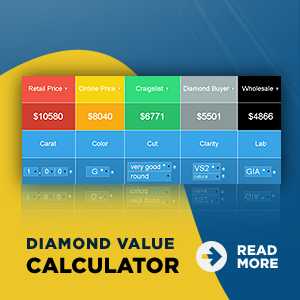The Origin of color grades
Color is a defining factor while valuing diamonds. It can range from colorless to yellow, brown, and so on. The more colorless a diamond, the greater its rarity and value. The individual colors of diamonds were classified and described very early on. In the United States, the country with historically the biggest share of the diamond market, a system of diamond grading was first devised at the start of the 1930s with its own terms for color designation.
The various names of colors, which originated from the then newly discovered sources in South Africa, are still known even today as the “old terms”. These were replaced over time in the USA and in other countries by figure-based or letter-based systems as well as by other descriptions. The “old-terms” were based on a colorless to cape series including ten color grades with imperceptible transitions:
- Jager
- River
- Top Wesselton
- Wesselton
- Top Crystal
- Crystal
- Top Cape
- Cape
- Light Yellow
- Yellow
Most of the old terms are derived from the names of former diamond mines, without defining the color grade more precisely.
The term Jager comes from the name of a South African diamond mine the Jagerfontein Mine. This mine yield the very finest blue white diamonds. In the first attempts at a definition of color, however, it was realized that the color stage Jager did not represent a slight blue suffusion but that the visible bluish coloration present was caused by another phenomenon; fluorescence. It was observed in fact that some diamonds exhibit different color hue in daylight and artificial light, and it was deduced from this that the weak blue hue arose from a concentration of ultra-violet rays in natural daylight. The term “Jager” as a description of the highest color grade was therefore removed from the scale and River took over first place. For diamonds which were found in rivers and alluvial deposits, the term “River” was adopted. These stones were usually very transparent and better color than diamonds found in pipes.

In the 1950s GIA established a color-grading system for diamonds. Because many of the color-grading systems that came before t used vaguely defined trade terms, GIA wanted its system to clarify the color-grade categories. In the beginning, GIA planned the system so that only jewelry professionals would use it.
They started the scale with the letter ‘D’ hoping that the letter’s poor reputation in the American school grading system would keep it from being used with customers. Today, professionals and consumers alike use the GIA Color Scale. It has maintained its reliability and become the most widely recognized and well-respected color-grading system in the world.
To provide a basis for color comparison, GIA assembled a set of MASTERSTONES. It took years to find diamonds that represented all letters in the GIA color-grading system. Since the 1950s, additional masterstone sets have been assembled by carefully matching them to the original set. This has helped the consistency and accuracy of the GIA system.

The masterstones represent known depths of color, ranging from colorless through gradually deepening tints of yellow. Masterstones graded as whole grades, such as H or I, represent the least amount of color in that grade. In addition to grading the color of diamonds, other factors such as the Shade/Hue, inherent Fluorescence in a diamond, as also its color, are factors that can have an influence on the overall color of a diamond, and are therefore critical to the grading too.
The GIA Color Scale
The GIA color scale begins with the letter D (colorless) and continues through the alphabet to Z (light yellow, brown, or gray). A diamond color grade is based on its tone and saturation and requires an assessment of its absence of color.







